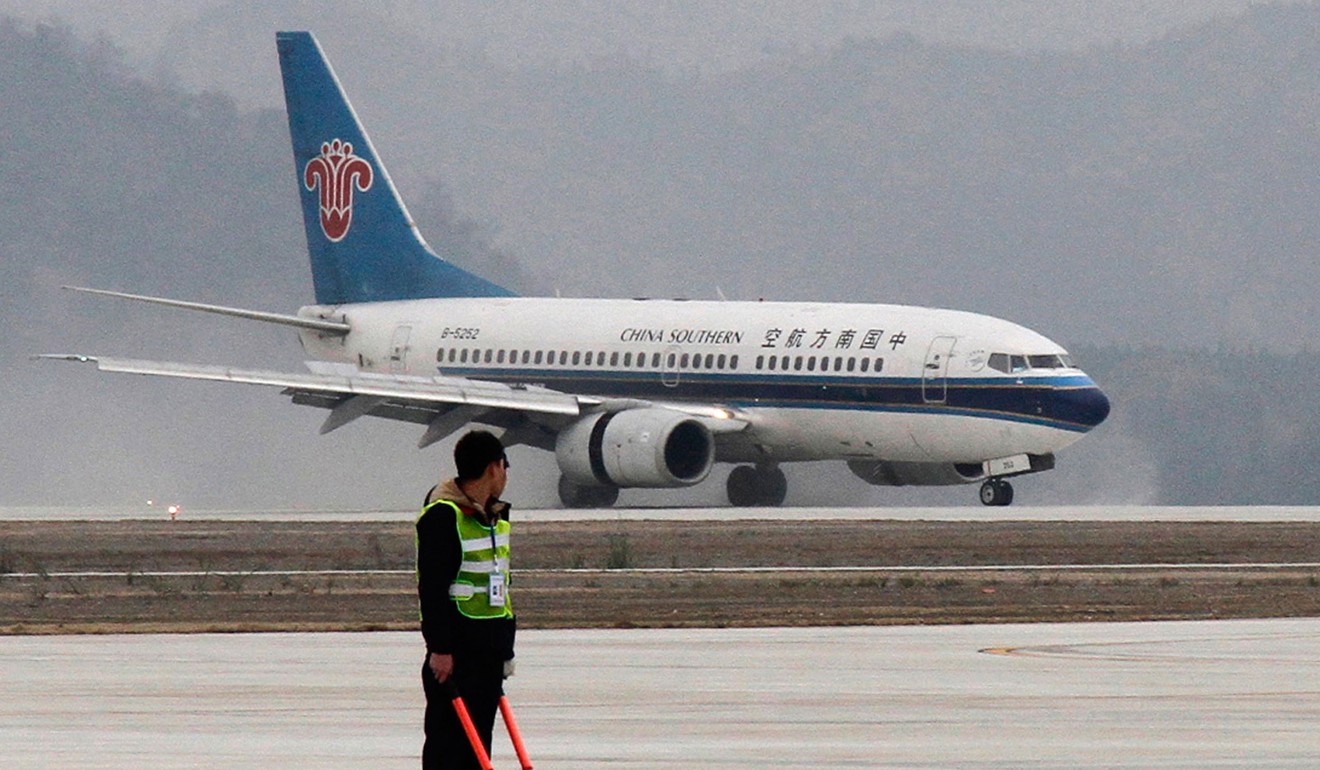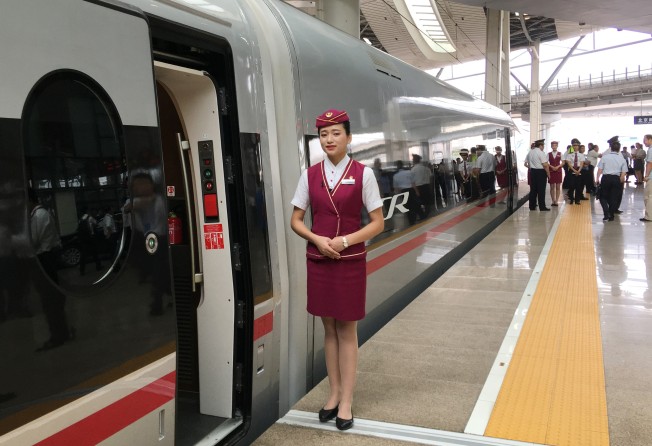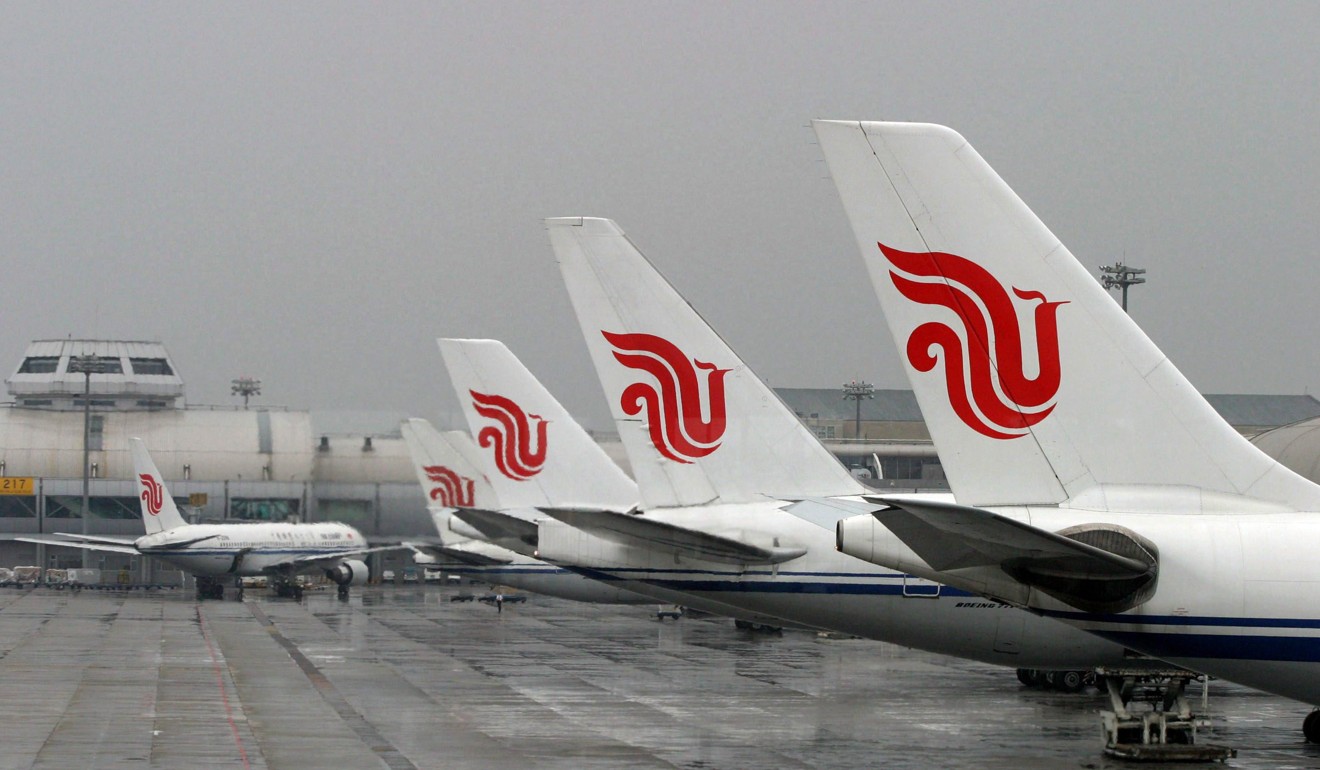
China’s fastest bullet trains pose threat to domestic airlines, prompting them to speed up global expansion
China’s high-speed rail operator has reported a 140 per cent rise on year in bookings for lines that terminate in Hangzhou over the past week-long holidays, underlying a potential trend of consumers increasingly shifting to domestic rail travel

With China having recently launched the world’s fastest bullet train between Beijing and Shanghai, analysts are now concerned that Chinese airlines could lose domestic market share gradually to high speed rails and see their price power weakened further in the next few years.
The intensified domestic competition might also prompt Chinese air carriers to shift more capacity towards international routes and seek new opportunities from overseas markets, as rising personal income fuels more international travel, they said.
China recently increased the speed of bullet trains between Beijing and Shanghai to 350km/h, cutting travel time to under four hours and 30 minutes. This made China’s high-speed rail the fastest in the world, Xinhua reported.
Plans were also under way to increase the maximum speed of a third of the country’s high-speed rail (HSR) lines to similar levels, China Railway Corp special technical adviser He Huawu told Xinhua.
“In our view, this will effectively boost HSR’s existing capacity and increase its threat to airlines, ” said Edward Xu, Penelope Butcher and Rajeev Lalwani, analysts for Morgan Stanley, in a recent research report.

The increase in bookings can be, to a large extent, attributed to China’s aerospace control and infrastructure bottlenecks at tier-one cities, driving more passengers to the HSR services.
“In particular, more rampant flight delays at hub airports of Beijing and Shanghai are frustrating passengers, who are thus tempted to choose HSR as an alternative,” said Morgan Stanley analyst, Edward Xu.
“The more stringent policies on airport slot allocations in Beijing, Shanghai and Guangzhou recently made by CAAC (Civil Aviation Administration of China) should further reduce capacities on air routes in Eastern China, which have been the busiest.”
In particular, more rampant flight delays at hub airports of Beijing and Shanghai are frustrating passengers, who are thus tempted to choose HSR as an alternative
The Morgan Stanley analysts have projected that the accelerated HSR services would have a negative impact on airlines’ passenger volumes and revenue growth in the next few years.
In a base case scenario, airlines were expected to gradually lose domestic market share to HSR in the next three years, falling from 13.4 per cent in 2017 to 12.5 per cent in 2019, the analysts said.

That would imply a slowdown in domestic passenger growth from 14.4 per cent in 2017 to eight per cent in 2019.
To compete with the lower HSR fare rates, airlines will have to operate at a reduced price. Thus, airline revenue growth on domestic routes will slow from 16.2 per cent in 2017 to 9.6 per cent in 2018, and 9.4 per cent in 2019, according to Morgan Stanley’s estimates.
The investment bank downgraded the Hong Kong-listed shares of China Eastern Airlines and China Southern Airlines to underweight from overweight, while maintaining equal weight on those for Air China.
According to Morgan Stanley, the overweight rating means the analyst believes the stock’s total return will exceed the average return of others covered in its industry over next 12 to 18 months, on a risk-adjusted basis.
Nonetheless, the intensified domestic competition may drive Chinese airlines to shift more of their focus to overseas markets, and seek new opportunities from the middle class’ growing appetite in international travel.

“[The domestic competition] should drive more capacity shift towards international routes.”
Although China’s outbound travel demand has experienced headwinds since the second half of last year, weighed by political and safety issues in the markets of Korea, Japan, Taiwan, Hong Kong and Thailand, the analysts anticipated a demand recovery after the short-term hiccups.
“In view of the secular trend in China’s outbound travel driven by rising incomes, we continue to see further boost to consumption demand for hotels, duty free shopping, leisure, and transportation in overseas markets,” they said.
According to their estimates, the volume of China’s outbound travellers will reach 197 million in 2020, representing 14 per cent of China’s population, similar to Japan’s level of 13 per cent, but still below the US’ 23 per cent in 2015.
Specifically, Chinese visitors to Asia-Pacific, North America and Europe will reach 66 million, 7 million and 10 million respectively, in 2020, stimulating consumption and transportation demand in relevant countries, they added.